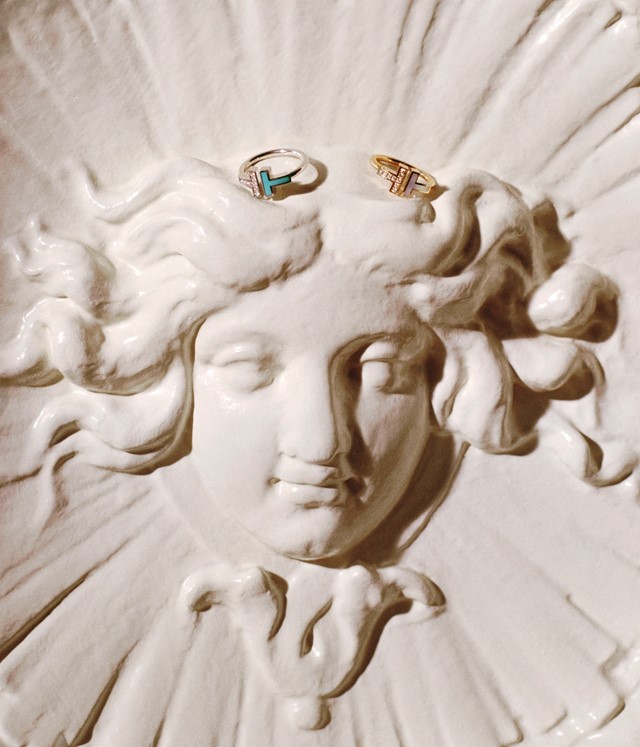In the second of a new series exploring the precious stones used in the latest Tiffany T designs, Ana Kinsella looks at the ornamental and ceremonial uses of turquoise throughout history
Tiffany & CoThere has always been something mysterious about turquoise. With a fine, waxy texture, the stone is chosen for its colour, reminiscent of swimming pools and Caribbean coves, gauzily filtered through the haze of memory.
Perhaps that’s why, throughout history, it has been so prized by so many. For thousands of years and across countless societies, turquoise has been used as an ornamental stone. Considered one of the first gemstones to be mined for this purpose, turquoise was chosen by rulers from Ancient Egypt to the Aztecs. Its vibrant colouring, which can range from sky blue to an almost sage green, meant it was easy for early civilisations to project particular symbolisms onto it, and its smooth surfaces make it ideal for cutting and carving into various designs. Whether a sign of good fortune or spiritual healing, jewellery and talismans made from vivid turquoise stones have proved compelling for people all over the world for centuries.
One such example is the value placed on turquoise by indigenous Native American tribes such as the Navajo and Apache people. Both groups imbued turquoise with ceremonial and protective qualities, and after discovering rich seams of it embedded in igneous rock, would mine it using stone tools and use the bold-coloured stone to create amulets carried on the person. Later, with the advent of new artisanal techniques this evolved into the distinctive silver-and-turquoise jewellery worn widely in the desert states of the Southwestern US today. Native American artisans learned the art of silversmithing from craftsmen who had travelled from Mexico and Spain, and by the late 19th century, Navajo silver and turquoise jewellery, particularly chunky engraved rings and striking geometric necklaces, had become an icon of the region.
While turquoise in jewellery has a history that feels closely linked to individual regions around the world – whether in the American Southwest or in religious pieces from Persia – it also features prominently in one of the great icons of archaeological history of all time. Panels of turquoise, along with lapis lazuli and quartz, line the death mask of Tutankhamun, now housed in the Egyptian Museum in Cairo. The discovery of the mask in 1925 led to a boom in Europe in jewellery and art inspired by the rich strips of colourful stone, juxtaposed with shining gold. The iconic mask, as well as the hysteria that erupted around it, is a reminder of the enduring power of ornament and decoration, across the millennia and all over the world.
Discover new turquoise designs from the Tiffany T collection here.
